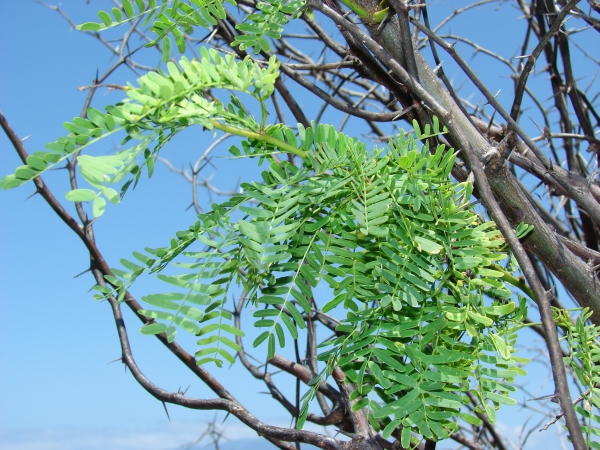Invasive species in Tamil Nadu threatens irrigation but could be a valuable resource
Its scientific name is Prosopis juliflora. Other monikers include mesquite, Kabul acacia, or the more sinister “devil tree”…and its taking over.

Photo: Forest and Kim Starr on Flickr
Native to the Caribbean it is now regarded as an invasive weed across much of Africa, South Asia and Australia. Introduced to semi-arid areas as a source of firewood and fencing, its rapid spread pushes out indigenous plants and the animals that feed on them. With its thorns and many low branches it forms impenetrable thickets which prevent cattle from accessing watering holes. It also takes over pastoral grasslands and livestock which consume excessive amounts of seed pods are poisoned. Furthermore, it contributes to land erosion due to the loss of native grasslands.
But its effects on water supply are perhaps the most serious. It has some of the longest roots known. The tree itself is usually short and shrubby, but underground it can descend over 50 meters. That spells trouble for local water users. In large numbers its deep root systems can have a devastating effect on groundwater, leading to rapidly declining water tables. That is bad news for local irrigating farmers.
It has been present in India since colonial times, but in the 1950s the chief minister of Tamil Nadu recommended plantation of P. juliflora as a hedge plant to overcome fuel shortages. A decade later it was invading farmland and tank beds. A long period of drought only encouraged the rampage. Owing to the extensive root systems, the trees could not be removed manually and heavy machinery was required. Fertile lands were degraded and water supply from tanks reduced considerably.
To find out the impact this has had on farming in the state, the IWMI Tata Water Policy Program undertook a recent study which has just been published. Using remote sensing techniques the research team established that around a third of the water spread area of nearly 40,000 tanks in Tamil Nadu is infested with P. juliflora.
So its presence is widespread, but attitudes towards the tree are mixed. For instance, the researchers found that a substantial number of households are dependent on it for kitchen fuel. They would prefer the bushes and trees to remain and are generally against clearance. Woodcutters are often from marginalized and landless communities, so are also in favor of the invader.
Farmers with tube wells, however, are less enamored. In infested areas, water table depth can decline as much as 7 meters in a year. This means higher pumping costs and, in extreme cases, complete loss of water supplies. This makes land un-farmable and cheap, encouraging developers to buy up arable areas – much to the dismay of local people.
Permanent removal of the plant, however, is expensive requiring earth movers and chemical treatments. This is rarely a realistic option for communities of smallholders.
Economic analysis of the problem showed that each family in affected areas incurred an annual direct net loss of just over INR15,000 (USD225).
The tree is particularly aggressive in taking over tanks that have an irregular water supply. Those which hold water only for 3 months or less become completely infested, and this spreads to the adjacent irrigation command area. Tank rehabilitation and management strategies should take this into account.
One idea, says the study’s author Ramaswamy Sakthivadivel, is to convert tanks and their command areas which only get sporadic water supply with less than 3 months storage, into agro forestry plots with managed P. juliflora. Since the deregulation of the Indian electricity generation industry in 2003, small scale generating plants have begun to use wood as an energy source. As a result, the demand for wood is rapidly increasing and the price has more than doubled. The income generated from agroforesty expansion could compensate for the decline in cropping, and contribute to an increase in the net household income, especially for marginal and poor farmers.

